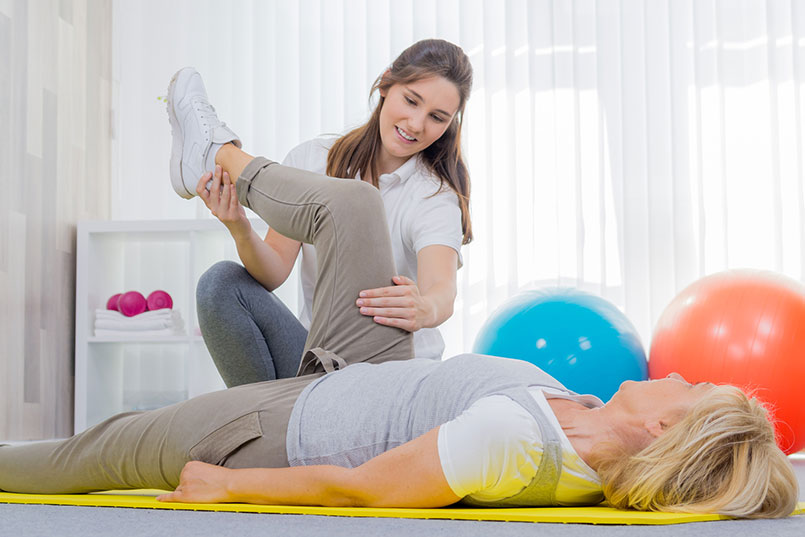Osteoarthritis is the most common disease of joints adults suffer from worldwide.
The name ‘osteoarthritis’, a Greek word, can be divided in ‘osteo’, ‘arthro’ and ‘itis’. If we translate the word we become ‘of the bone’, ‘joint’ and ‘inflammation’. Thus, simply put, we can say that osteoarthritis is an inflammation of the bone and joint.
The knee is a ‘synovial joint’, which means it is enclosed by a synovial capsule that contains synovial fluid. The joint surfaces of the femur (thigh bone) and tibia (shin bone) are covered by ‘hyaline cartilage’, which provide friction free movement.
The semi-circular structures sitting on top of the shin bone are the two menisci. The menisci are shock absorbers that are made of ‘fibrocartilage’.
As can be seen, the knee joint has a medial (inside) and lateral (outside) ‘compartment’ and one or both of these can be affected by arthritis.
Damage to the ‘articular’ or hyaline cartilage can be as a result of sporting trauma, but is more commonly due to repetitive stresses over a long period of time. This is usually associated with habitual overuse of a joint for occupational or sporting purposes.
In most individuals, the signs and symptoms do not appear until middle age, but the disease process starts much earlier and the arthritis process can be accelerated due to previous damage, trauma and other factors.
The hyaline cartilage is normally ultra smooth to allow friction free movement, but early damage to the superficial layers produces a frayed appearance.
In time, with more stress, this frayed surface evolves into cracks or ‘fissures’ in the articular cartilage, which can leave the underlying bone exposed.
Articular cartilage is a firm rubbery protein material covering the end of a bone. It acts as a cushion or shock absorber between the bones.
When articular cartilage breaks down, this cushion is lost, and the bones will grind together. This causes the development of symptoms such as pain, swelling, bone spur formation and decreased motion.
Osteoarthritis commonly affects weight bearing joints such as the knee, but it may affect any joint.
Epidemiology
Osteoarthritis is the most prevalent form of arthritis and occurs especially in the knee joint. It affects nearly 6% of all adults, but more women are affected than men.
According to a number of published reports, anywhere from 6% to over 13% of men, but between 7% and 19% of women, over 45 years of age are affected, resulting in a 45% less risk of incidence in men.
Approximately 50% of the 65+ population are affected by OA in the knee, but it can also affect young people.
Osteoarthritis of the knee (OA knee) is one of the five leading causes of disability among elderly men and women.
The risk for disability from OA knee is as great as that from cardiovascular disease.
Several factors may increase the risk of developing osteoarthritis of the knee.
- Age
- Gender
- Obesity
- Joint hypermobility or instability
- Sport stress with high impact loading
- Repetitive knee bending or heavy weight lifting
- Specific occupations
- Injury to the joint
- History of immobilisation
- Family history
- Other illnesses
What are the symptoms of knee arthritis?
- Knee pain often with a gradual onset and progression often worse first thing in the morning or after periods of inactivity
- Knee pain often aggravated with weight bearing activities such as walking, going up or down stairs, kneeling and squatting
- Knee stiffness
- Knee swelling
- Warmth around the knee
- Clicking or grating
- Decreased strength of the lower limb muscles
Where to next?
It’s important to get a diagnose as early as possible and treat the symptoms with a number of available options. As some options are only available at certain early stages of wear.
We recommend to seek your physio or doctor to get a thorough assessment as early in the disease progression as possible.
Lifecare Prahran Sports Medicine is close to suburbs including Malvern, South Yarra, Toorak, Armadale, St Kilda East, Caulfield, Richmond and Hawthorn, and has early and late appointments for all your sports medicine and physiotherapy needs.

